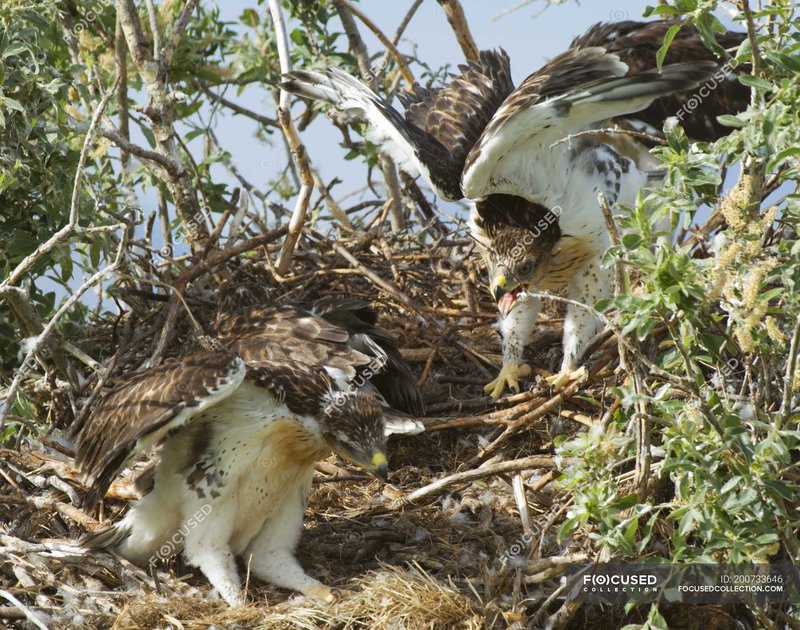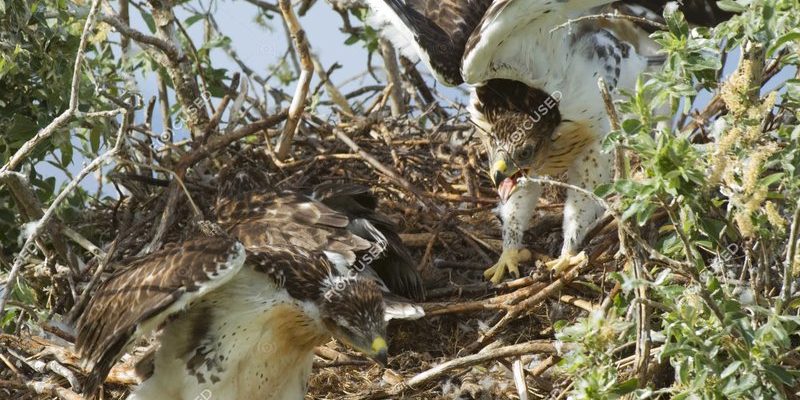
You might picture their nests as grand, elaborate structures hidden away in trees or cliffs. However, the reality is often a bit different. The Ferruginous Hawk prefers a different approach, often nesting in less traditional spots that reflect its nomadic nature. So, let’s dive into the intricate world of the Ferruginous Hawk, exploring everything from where they nest to how they raise their young.
Where Do Ferruginous Hawks Build Their Nests?
Ferruginous Hawks are known for their adaptability when it comes to nesting locations. Unlike many raptors that prefer dense forests or high cliffs, these hawks often make their homes in open fields and grasslands. You might find their nests perched on tall trees, utility poles, or even rock outcrops.
Their nests are typically built high off the ground to provide security from predators. The Ferruginous Hawk uses sticks, grasses, and other natural materials to construct a cozy, sturdy nest. Here’s the interesting part—each year, these hawks often return to the same nesting site, adding new materials to their existing nests. This means that over time, their nests can grow quite large, sometimes reaching several feet in diameter.
What really stands out is the choice of location. Ferruginous Hawks tend to favor areas that provide a good vantage point for spotting prey. They’re excellent hunters, so having a clear view from their nesting site is crucial for their survival.
The Nesting Season: When Do They Nest?
The nesting season for Ferruginous Hawks typically occurs from late winter to early spring. Depending on where they live, this can range from February to May. The timing is crucial as it aligns with the availability of food for their young. You might wonder why they don’t nest at different times. Honestly, it’s all about ensuring that there’s enough food when the chicks hatch.
During this season, male hawks are busy establishing their territory and attracting a mate. They perform impressive aerial displays and vocalizations to impress females. Once a pair has formed, they often work together to prepare their nest, reinforcing it for the upcoming hatchlings.
After mating, the female lays between 2 to 4 eggs, which are usually incubated for about 34 to 36 days. Throughout this period, the male is crucial, hunting and bringing food back to the female. This teamwork is a great example of how these hawks support each other during the delicate nesting phase.
Incubation and Hatching: The Early Days
When the eggs finally hatch, it’s a big deal! The chicks are altricial, meaning they’re born helpless and rely heavily on their parents for everything. Here’s the thing: these chicks develop quickly. Within just a few weeks, they will start to grow feathers and begin to explore their surroundings.
During the early days, both parents care for the young. The female often stays close to the nest, brooding the chicks and keeping them warm, while the male is out hunting for food. You might be wondering how they manage this balancing act. Well, it’s all about instincts and teamwork!
As the chicks grow, they require more food, and the parents step up their hunting game. They mostly feed on small mammals, birds, and even reptiles, showcasing their adaptability in food sources. This phase is crucial for the chicks’ survival, as they need to build strength before they’re ready to leave the nest.
Fledging: When Do Young Hawks Take Flight?
Fledging typically occurs about six to seven weeks after hatching. This is when the chicks are ready to take their first flight. Before they hit the skies, they’ll practice flapping their wings and hopping around the nest.
When they finally take off, it’s an incredible sight! But don’t think they’re off on their own right away. Young Ferruginous Hawks will often stay close to their parents for several weeks after fledging. During this time, they continue to learn essential survival skills, such as hunting and navigating their environment.
It’s not uncommon for fledglings to return to the nest for a meal. The parents are still heavily involved in feeding and protecting their young, emphasizing their commitment as a family unit. This extended family period is important for young hawks to gain the skills they need to thrive in the wild.
Migration Patterns: What Happens After Fledging?
After spending a few months learning and growing, Ferruginous Hawks will prepare for migration. Most of these birds migrate to warmer regions during the winter months. The timing of this migration typically occurs from late summer to early fall, depending on geographical location and weather conditions.
During migration, these hawks travel in search of favorable hunting grounds and milder climates. You might notice that their journey can take them thousands of miles. It’s like an epic road trip, where they navigate using the sun, stars, and their natural instincts.
As they reach their wintering grounds, they begin to establish new territories. The cycle of life continues, and they’ll prepare for the next breeding season, potentially returning to the same areas where they were born. This migratory behavior highlights the adaptability and resilience of Ferruginous Hawks in response to the changing seasons.
Conservation Status: Protecting Their Future
Today, Ferruginous Hawks face several threats, including habitat loss and environmental changes. Human activities—like agricultural expansion and urban development—can impact their nesting sites and food sources. Conservation efforts are crucial to ensure these magnificent birds can continue thriving in their natural habitats.
Organizations and wildlife agencies work tirelessly to monitor hawk populations and educate the public about their importance. Protecting grasslands and ensuring healthy ecosystems are essential to the survival of Ferruginous Hawks and many other species.
As a wildlife enthusiast, you can help by supporting conservation initiatives and spreading awareness about the challenges these birds face. Every effort counts, whether it’s advocating for land preservation or participating in local conservation projects.
The Ferruginous Hawk is more than just a beautiful bird—it’s a fascinating example of nature’s resilience and adaptability. From their unique nesting habits to the challenges they face, there’s a lot to appreciate about these majestic raptors. By understanding their lifecycle and the environments they thrive in, we can better appreciate the delicate balance of nature.
So, next time you see one soaring overhead, take a moment to reflect on the incredible journey these hawks undertake each year. Their story is a reminder of the beauty of wildlife and the importance of protecting these magnificent creatures for generations to come.

